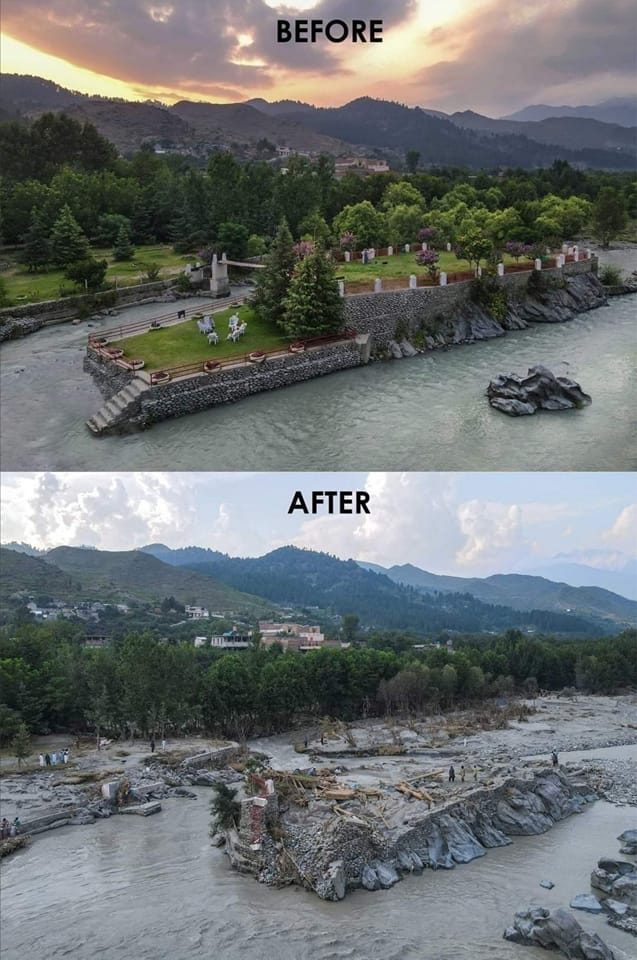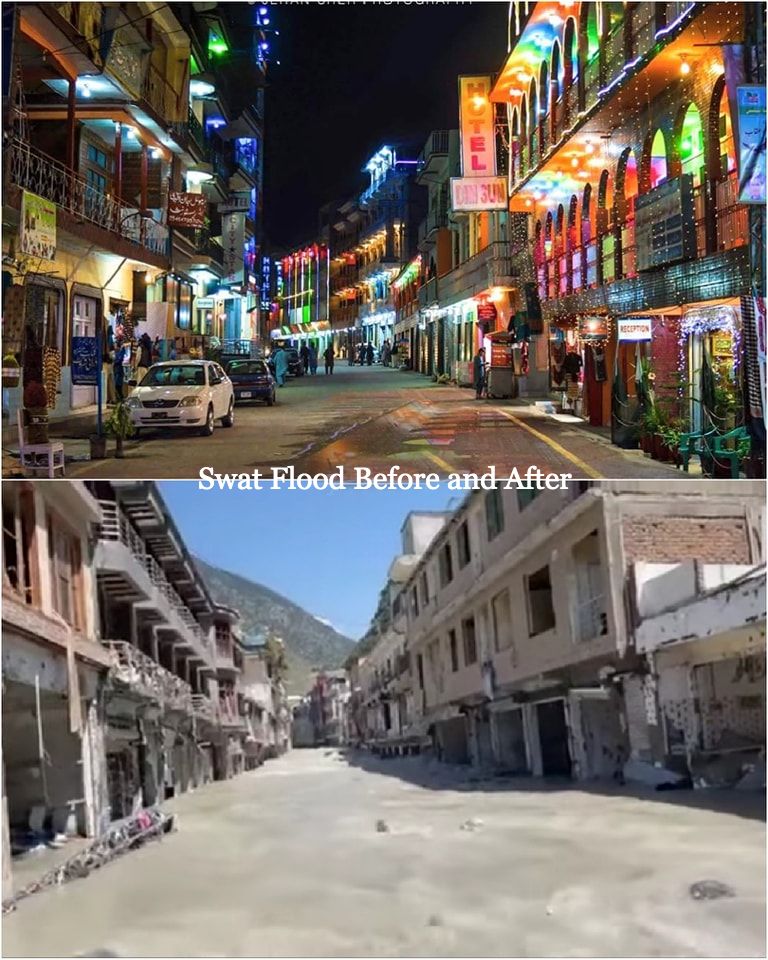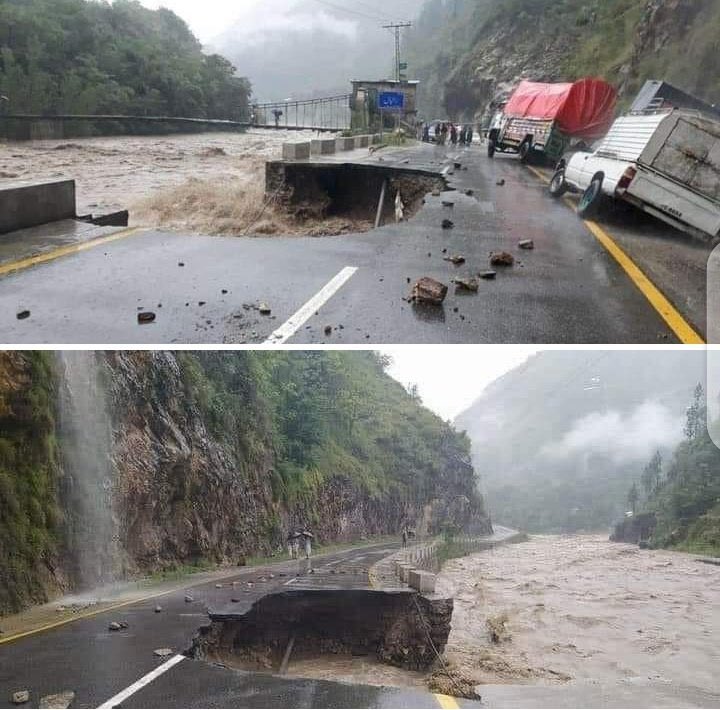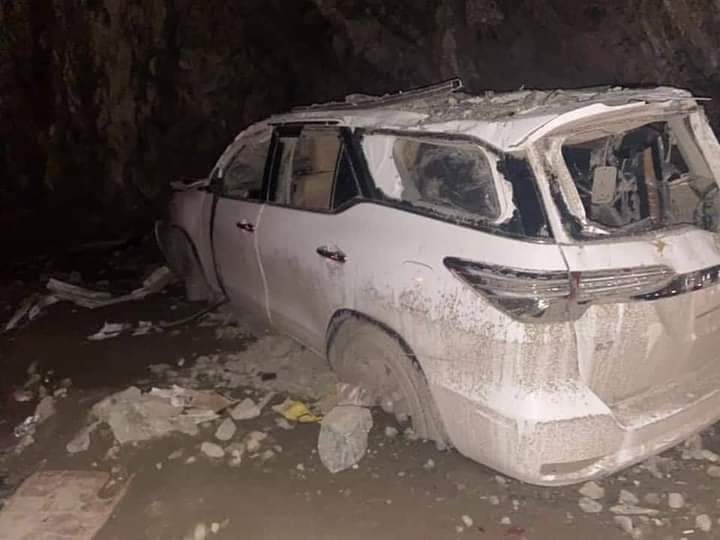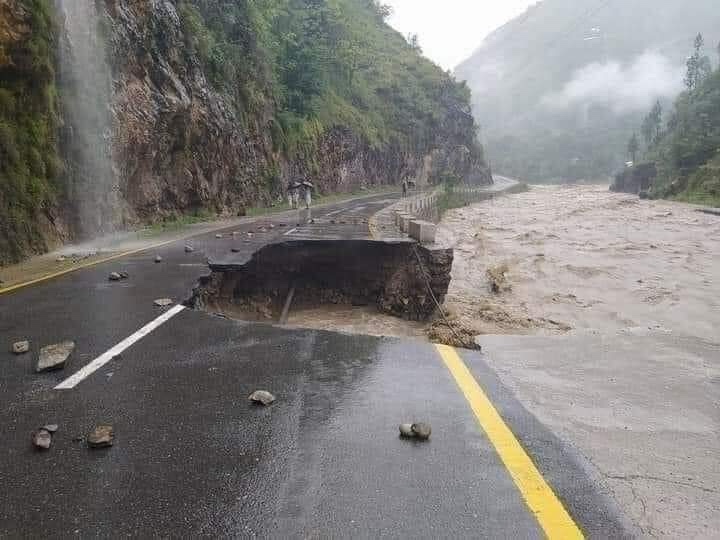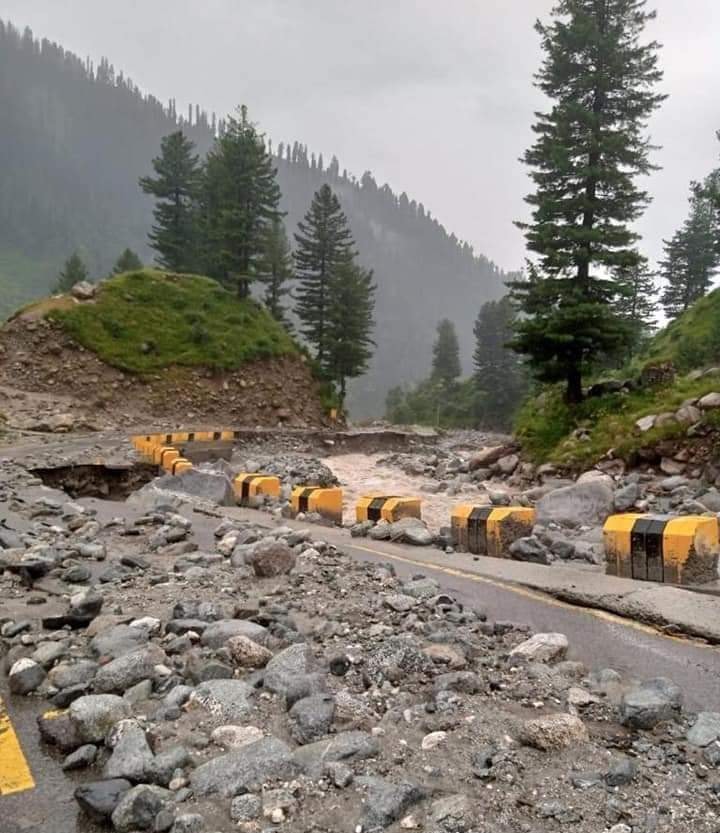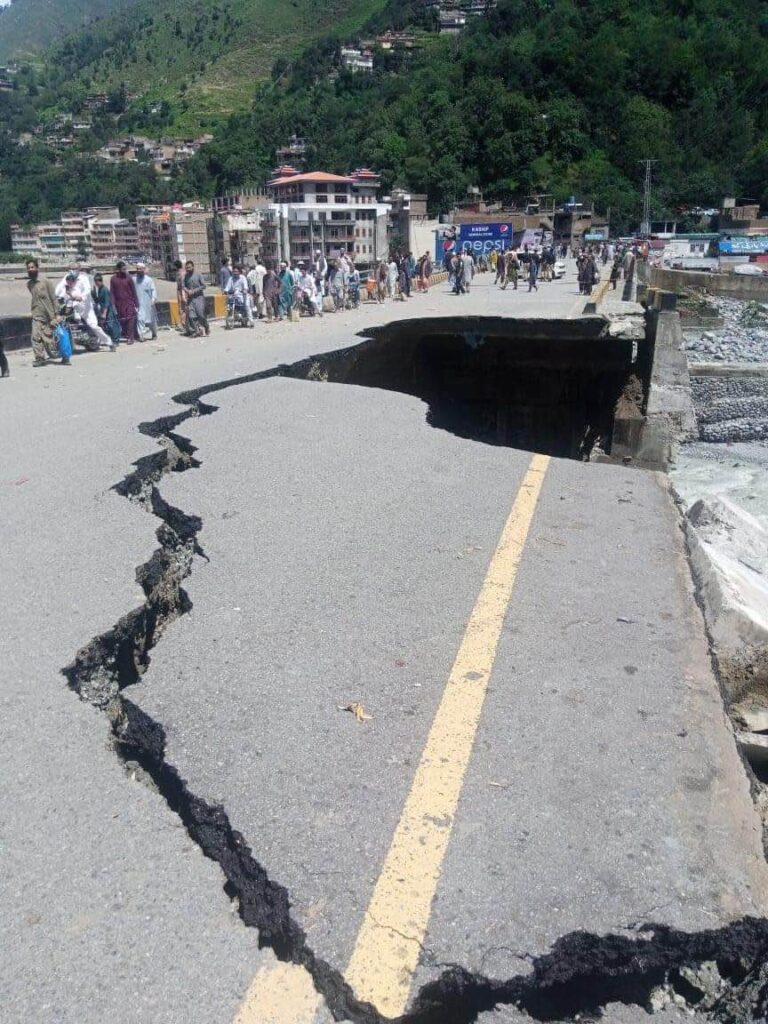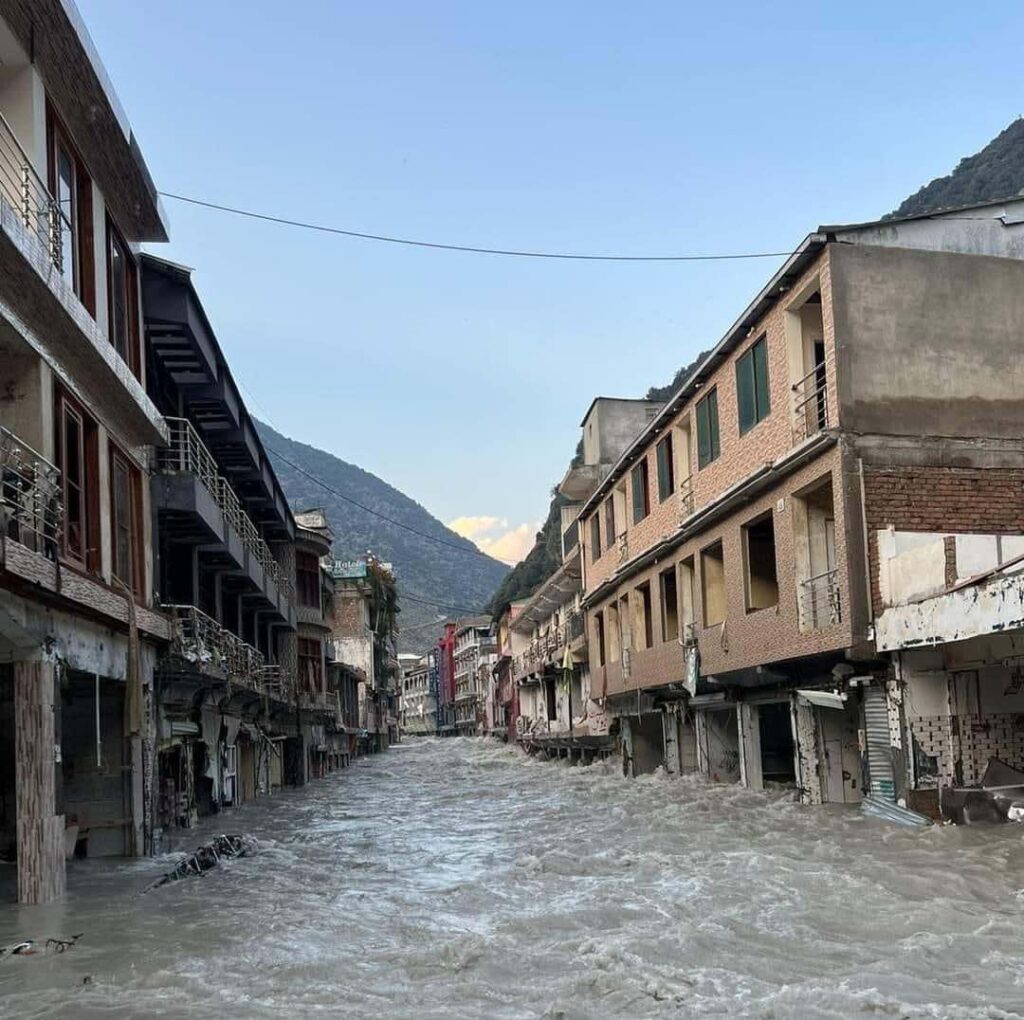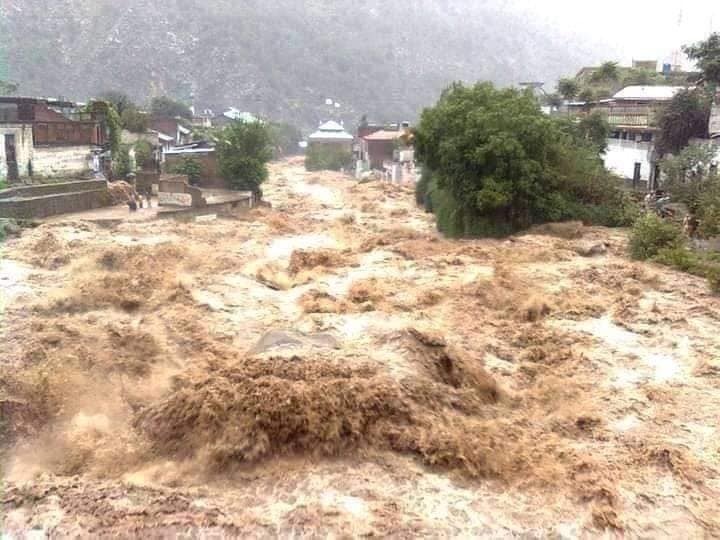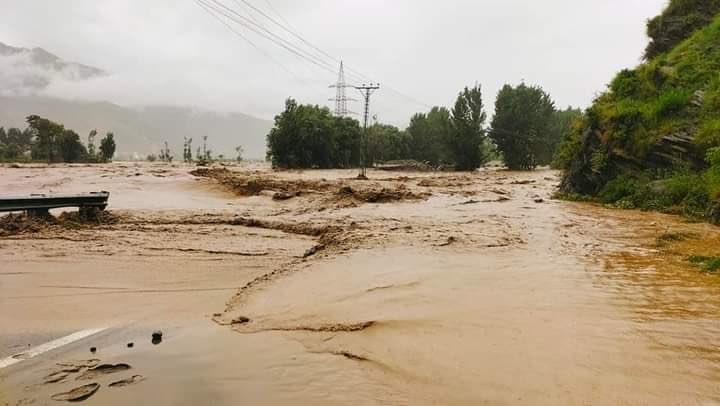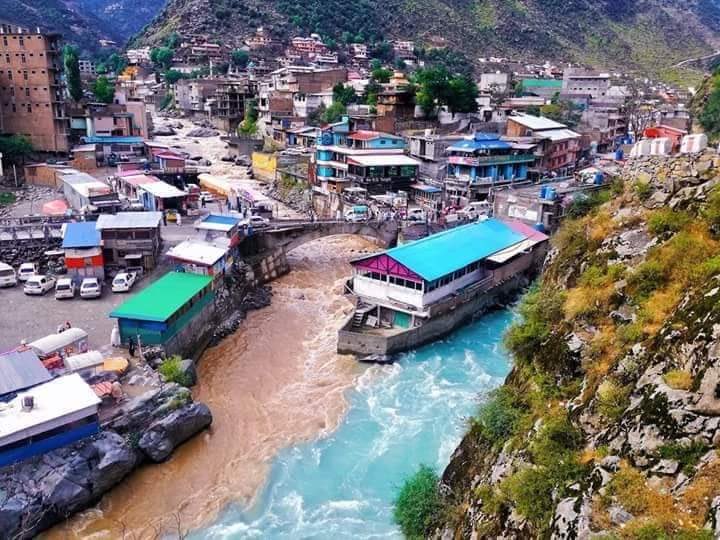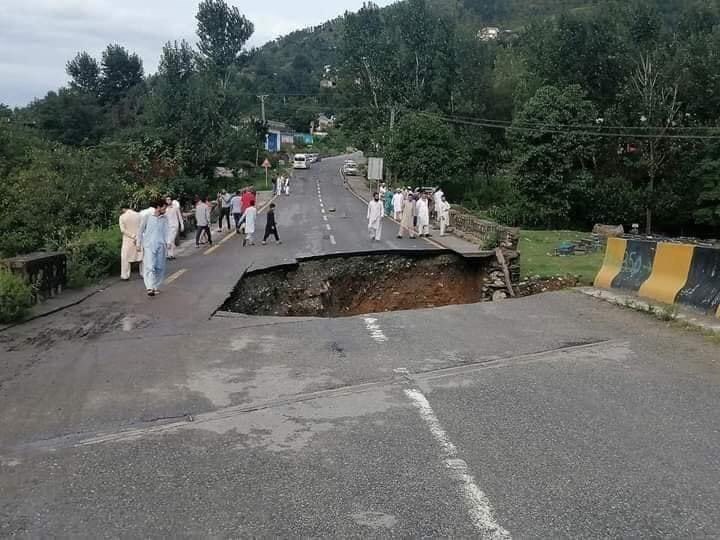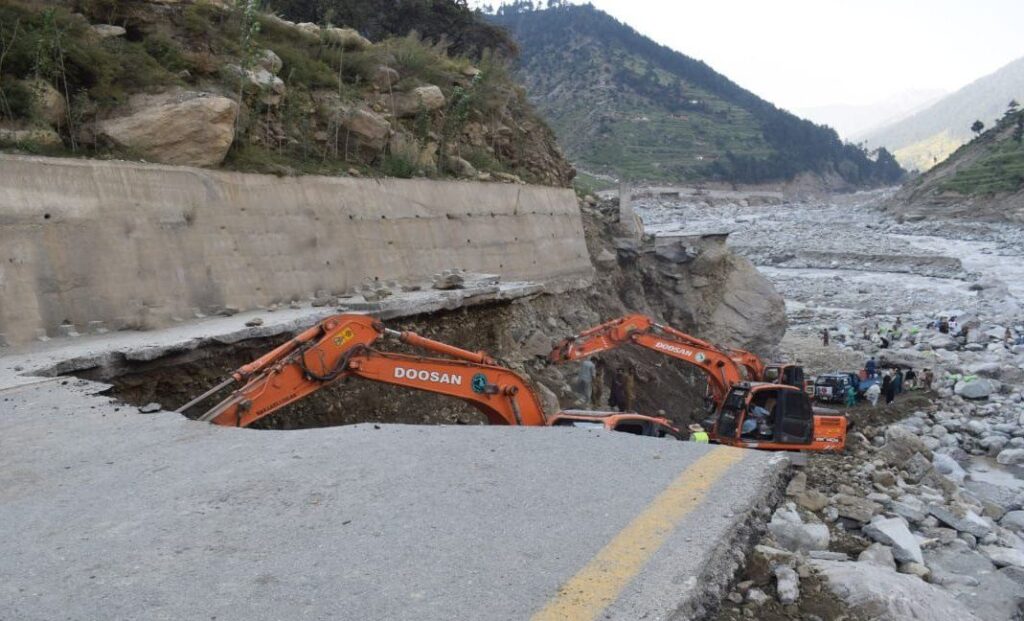Flood in Swat is mostly caused by natural weather events such as heavy rainfall and thunderstorms over a short period. Flash flooding in Swat happens when rain falls so fast that the underlying ground cannot cope, or drain it away fast enough.
Roads in Swat Valley can become like rivers and if there is a lot of water, it can flood buildings and carry cars away. So, if the rain is falling too fast for the ground or drains to cope, there is a risk of flash flooding in Swat Valley.
Table of Contents
What to Do When Caught in Flood in Swat?
If the road is flooded, turn around and find another route. The number one cause of death during flooding is driving through flood water, so the safest advice is to turn around, don’t drown.
Although the water may seem shallow, just 12 inches (30cm) of moving water can float your car, potentially taking it to deeper water from which you may need rescuing.
Flood water also contains hidden hazards which can damage your car, and just an egg-cupful of water sucked into your car’s engine will lead to severe damage.
Never drive through flood water. Turn around.
Choices and Planning Ahead
Even moderate rain can reduce your ability to see and be seen. A good rule of thumb is ‘if it’s time for your wipers, it’s time to slow down.
If heavy downpours are expected, avoid starting your journey until it clears.
If you can, choose main roads, where you are less likely to be exposed to fallen branches and debris and flooding.
Use dipped headlights if visibility is seriously reduced.
Gusts of wind can unsettle vehicles – grip your steering wheel firmly with both hands. This is particularly important when planning to overtake.
Keep an eye out for gaps between trees, buildings or bridges over a river or railway – these are some of the places you are more likely to be exposed to side winds. Ensure that you maintain enough room on either side of your vehicle so you can account for it being blown sideways.
Roads will be more slippery than usual in wet weather – be sure to give yourself more time to react when approaching a hazard. Increase your following gap to at least four seconds from the moving traffic in front.
Keep your eyes peeled on the road at all times as spray from other vehicles can suddenly reduce your visibility. Remember it affects others too, so anticipate their actions and be prepared.
Heavy Rain in Swat
Turn your headlights on – the Highway Code says you must use them when visibility is seriously reduced (less than 100m).
Use fog lights if you like, but switch them off when visibility improves.
Leave twice as much space between you and the car in front – it takes longer to stop in the wet.
If your steering feels light due to aquaplaning, ease off the accelerator and slow down gradually.
If you break down don’t prop the bonnet open while you wait. Rain-soaked electrics can make it harder to start the engine.
Floods and Standing Water
Try to avoid standing water if you can.
Don’t drive into flood water that’s moving or more than 10cm (4 inches) deep. Let approaching cars pass first.
Drive slowly and steadily so you don’t make a bow wave.
Test your brakes as soon as you can afterwards.
Fast-moving water is very powerful – take care or your car could be swept away.
If you do get stuck in flood water, it’s usually best to wait in the car and call for help rather than try to get out.
Why Slow Down?
Driving fast through water is dangerous, inconsiderate and can end up being very expensive.
Your tyres can lose contact with the road, causing you to lose steering control – called aquaplaning. If you feel it happening, hold the steering lightly and lift off to slow down gently until your tyres grip again.
At anything above a slow crawl, you’ll throw water onto pavements, soaking pedestrians or cyclists. You could be fined and get points on your licence for this.
It only takes an egg cupful of water to be sucked into your engine to wreck it, and on many cars, the engine’s air intake is low down at the front.
What to Watch Out For?
Look out for slip and trip hazards like kerbs under the water.
Manhole covers can get lifted and moved.
Water levels can change quickly.
Assume that flood water is contaminated:
Urban flood water can carry dangerous bacteria from drains and sewers that could cause disease.
Rural flood water is more likely to be contaminated by agricultural chemicals and animal waste.
Floodwater Facts
Most drowning deaths happen within only 3m of a safe point.
Two-thirds of those who die in flood-related accidents are good swimmers.
A third (32%) of flood-related deaths are in vehicles.
Cold water reduces your muscle strength – 20 minutes in water at 12C lowers muscle temperature from 37ºC to 27ºC, reducing strength by 30%.
Just 15cm of fast-flowing water can knock you off your feet and be enough for you not to be able to regain your footing.
It’s a challenge to stand in waist-deep water flowing at only 1m/s. By 1.8m/s (4mph) everyone is washed off their feet.
If the speed of the flood water doubles, the force it exerts on you or your car goes up four times.
Just 60cm of standing water will float your car.
Just 30cm of flowing water could be enough to move your car.
A mere egg cupful of water could be enough to wreck an engine.
Flood water can be contaminated and carry diseases.
Culverts (tunnels carrying water under a road) are dangerous when flooded – the siphoning effect can drag in pets, children and even fully grown adults.

